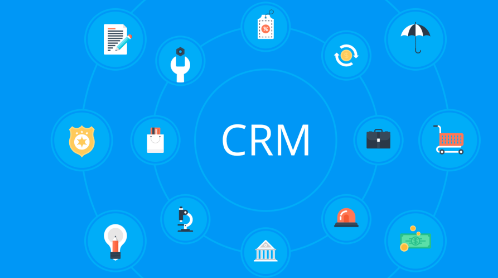Customer Relationship Management (CRM) is an essential strategy for businesses seeking to cultivate lasting relationships with their customers. Effective CRM not only helps in managing customer data but also enhances customer satisfaction, boosts sales, and drives overall business growth. However, to truly reap the benefits of CRM, companies must implement effective practices. Here are five tips for making the most out of your CRM system.
Table of Contents

1. Define Clear Objectives
One of the first steps to effective CRM implementation is to define clear and measurable objectives. Without specific goals, it’s challenging to assess the success of your CRM efforts.
Set SMART Goals
Utilizing the SMART criteria (Specific, Measurable, Achievable, Relevant, Time-bound) can be a great way to outline your objectives. For example, instead of setting a vague goal like “improve customer service,” a SMART goal could be “reduce response time to customer inquiries by 20% within the next six months.”
Align Objectives with Business Strategy
It is crucial that your CRM objectives align with your overall business strategy. This alignment ensures that CRM efforts contribute directly to larger business goals, whether that involves increasing sales, enhancing customer satisfaction, or entering new markets.
Also Read: 7 Key Benefits of Implementing CRM in Small Businesses
2. Focus on User Adoption
A CRM system is only as effective as the people using it. Ensuring user adoption is essential for maximizing the potential of your CRM.
Comprehensive Training Programs
Training is vital for effective CRM usage. Businesses should offer:
- Initial Training: Provide basic training sessions to familiarize users with the CRM software and its functionalities.
- Role-Specific Training: Tailor training to specific roles, such as sales, marketing, or customer support, so employees can learn how to utilize the CRM in ways that best support their tasks.
- Continuous Learning: Implement ongoing training sessions to keep staff updated on new features and best practices.
Foster a Supportive Environment
Encouraging a culture that values customer relationships is essential for promoting CRM usage:
- Lead by Example: Management should actively use the CRM system and highlight its benefits, showing employees its importance in daily operations.
- Provide Support: Establish a helpdesk or a dedicated team to address user questions and technical issues promptly.
3. Centralize Customer Data
A primary function of CRM is to centralize customer information. This centralized approach allows businesses to have a complete view of each customer’s interactions and history.
Comprehensive Data Collection
Gathering relevant data is vital. Ensure that your CRM captures:
- Contact Information: Basic details such as names, email addresses, and phone numbers.
- Interaction History: A record of all interactions, including calls, emails, and meetings, which helps understand customer behavior.
- Preferences and Feedback: Insights into customer preferences, needs, and feedback can provide valuable information for personalized marketing.
Data Integration
Integrating data from various sources can enhance the richness of customer profiles. For example, linking your CRM with marketing automation tools, email platforms, or customer support software can provide a comprehensive view of customer interactions across different touchpoints.
4. Leverage Analytics for Insights
Data analytics is one of the most powerful features of a CRM system. By leveraging analytics, businesses can gain actionable insights that drive decision-making and strategy.
Identify Key Performance Indicators (KPIs)
Establishing KPIs relevant to your business objectives can help measure the effectiveness of your CRM initiatives. Common KPIs include:
- Customer Acquisition Cost (CAC): The cost associated with acquiring a new customer.
- Customer Lifetime Value (CLV): The total revenue a business expects from a customer throughout their relationship.
- Sales Conversion Rate: The percentage of leads that convert into paying customers.
Regularly Analyze Data
Conducting regular analysis of CRM data helps businesses identify trends, understand customer behavior, and make informed decisions. Utilize built-in reporting tools to visualize data and generate actionable insights.
- Customer Segmentation: Use analytics to segment customers based on various criteria such as demographics, purchase history, and engagement levels. This segmentation allows for targeted marketing campaigns and personalized customer interactions.
- Forecasting: CRM analytics can help forecast sales trends and customer behavior, enabling businesses to allocate resources more effectively.
5. Continuously Improve Your CRM Strategy
The business landscape is constantly evolving, and so should your CRM strategy. Continuous improvement is essential for staying relevant and effective.
Solicit Feedback
Regularly gathering feedback from users and customers is crucial. Conduct surveys and interviews to understand their experiences with your CRM system.
- User Feedback: Ask employees about the challenges they face while using the CRM and any features they wish to see. This input can guide updates and improvements.
- Customer Feedback: Gathering insights from customers about their experiences can help businesses refine their approach to customer service and engagement.
Iterative Adjustments
Based on feedback and data analysis, make necessary adjustments to your CRM strategy. This could involve:
- Feature Enhancements: Upgrading your CRM with additional features or integrations that enhance functionality.
- Process Refinements: Streamlining processes to improve efficiency and reduce friction for users and customers.
Stay Updated on Trends
CRM technology is continually evolving. Stay informed about industry trends, emerging technologies, and best practices to ensure your CRM strategy remains effective and competitive.
- Webinars and Workshops: Attend industry events or webinars focused on CRM innovations to keep your team updated on the latest trends.
- Networking: Engage with other professionals in your industry to share insights and learn from their experiences.
Conclusion
Effective CRM is not just about technology; it’s about fostering a culture that values customer relationships and data-driven decision-making. By defining clear objectives, focusing on user adoption, centralizing customer data, leveraging analytics for insights, and continuously improving your CRM strategy, businesses can maximize the benefits of their CRM systems.
In a world where customer expectations are higher than ever, mastering effective CRM practices is essential for driving customer satisfaction, loyalty, and overall business success. Embrace these five tips to elevate your CRM strategy and unlock your organization’s full potential.